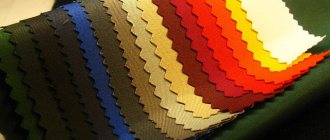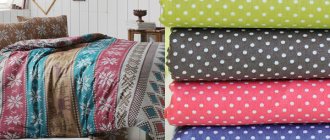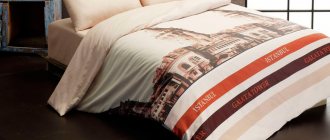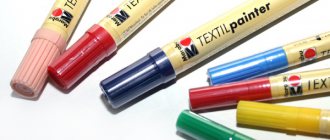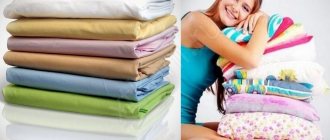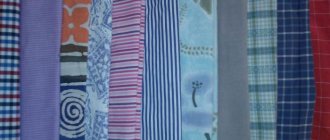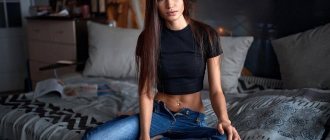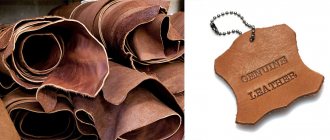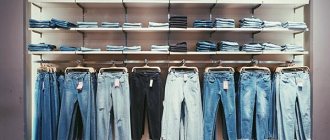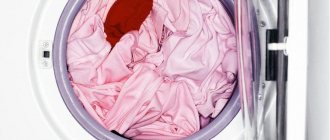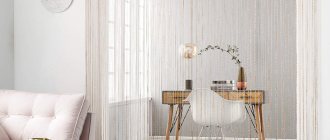Polycotton is a new generation high-tech fabric. It is in demand among leading manufacturers of bed linen and home textiles. What made her so popular? It's all in the composition. Polycotton combines the advantages of natural and synthetic fibers. This is a material for those who value comfort and practicality.
The name of the fabric speaks about its mixed composition. In translation, “poly” means “a lot”, and “cotton” means “cotton”. The fabric appeared relatively recently, but has already managed to win its fans. It was created in the late 50s of the last century as an inexpensive and practical material for a variety of purposes. Since then, the fabric has changed, but its composition has remained unchanged: the base is made up of cotton fibers, and polyester is added to them.
Appearance on the market
Despite the fact that one of the main producers of polycotton is Russia, the idea of creating such fabric arose in America. In this regard, a couple of myths should be debunked right away.
- “Invented by American scientists” The optimal fabric composition that provides the necessary characteristics is developed by technologists familiar with the production of materials, their “behavior” during operation, weaknesses and strengths.
- “Fundamentally new fabric” The authors of such statements are a little disingenuous, most often for advertising purposes. The idea of combining natural and synthetic fibers has existed for a long time and was successfully implemented in the production of hosiery and other knitwear. An innovation (and quite a successful one) was the use of similar technologies in the production of textiles.
Significant disadvantages
- does not allow air to pass through well. The higher the percentage of synthetic fibers, the worse the material “breathes”. During sleep, a person releases up to half a liter of moisture, this moisture is poorly absorbed. In addition to the fact that this causes discomfort, irritation may occur on the skin.
- rolls down. After several washes, pellets usually appear on the fabric, which also causes inconvenience during sleep and looks unsightly.
- electrified. Products containing synthetic fibers tend to accumulate static electricity and attract dust and debris (hair, pet hair).
Attention!
Some manufacturers produce similar PBCs both from 100% natural materials and from different types of polycotton.
Therefore, when choosing bed linen, pay attention not only to the brand and familiar packaging design, but also to the specified fabric composition.
The optimal composition is 65% cotton and 35% polyester or 50% cotton and 50% polyester; in this ratio, natural fiber provides good hygienic qualities of the material.
Fabric structure
Especially many myths have arisen regarding the composition of the material. Perhaps the reason for this was an incorrect translation of the title.
There are actually different grades of polycotton. Each of them contains both synthetic and natural fibers. The difference lies in the proportions, which explains the difference in cost.
The characteristics of the “experts” range from “the fabric is completely identical to natural” to “despite the name, the material is not cotton.”
The most common cotton to polyester ratios are:
- 65x35% respectively,
- 50x50%,
- 35x65%,
- 15x85%.
The higher the natural fiber content, the more expensive the fabric will be. However, you should be wary of sellers who claim that the material contains only 5% synthetics. Most likely, they are misleading buyers, since such a low content of additives does not provide any tangible effect and is therefore impractical.
Fabric properties
Positive characteristics of polycotton:
- Wear resistance. Frequent washing and long-term use do not affect the quality and appearance of items made from this fabric. The color retains its brightness.
- No fiber migration. Threads and fibers do not come out of the warp and do not move.
- Wrinkle resistance. The fabric does not require ironing after washing and does not wrinkle during use.
- Practicality in operation. The fabric is machine washable, and heavy stains can be removed with less than normal amounts of powder. The material dries quickly and does not absorb dirt.
- Relatively low cost.
- Minimal deformation and shrinkage. Polycotton holds its shape and does not shrink. It is easy to cut and sew.
- Good hygroscopicity and breathability.
- Excellent tensile strength.
- The fabric is attractive in appearance.
If the polyester content of the fabric is more than 75%, polycotton acquires the following disadvantages:
- Poor air conductivity.
- Electrification.
- Weak resistance to friction. Very soon, hooks and pellets appear on the front surface.
It is better to choose high-quality polycotton, in which polyester is no more than 50%. In this case, the fabric will be without such shortcomings. However, for sewing covers, material with a higher content of polyester fibers is suitable.
Properties and qualities
Now we need to figure out why polycotton is so good and why, in fact, its developers needed to mix dissimilar fibers in one fabric. Thanks to this combination, the material acquired the advantages of two types of fabrics.
From cotton he inherited:
- hygroscopicity,
- hypoallergenic,
- environmental safety.
From polyester:
- small shrinkage,
- low creasing,
- lack of fiber migration (the fabric does not bunch up to form denser and thinner sections),
- durability.
Price
The more cotton there is in polycotton, the higher its cost. The following factors influence pricing:
- fabric structure;
- material density;
- manufacturer.
Pakistani-made material has good reviews in terms of price-quality ratio. More expensive polycotton from the USA is also considered high quality.
Several Turkish manufacturers of these fabrics are also represented on the Russian market. Their products are in high demand due to their relatively low price. A meter of such fabric will cost starting from 80 rubles.
How to choose a blanket for a child: useful tips.
What are the sizes of bed linen according to European standards?
Photo of a blanket on a corner sofa: //izvolokna.com/domashnii/gostinnaya/nakidki-na-mebel/pokryvalo-na-uglovoj-divan.html.
The most inexpensive polycotton from China. Here prices start from 50 rubles. per meter Polycotton from Russian manufacturers is affordable. The products of the following companies are presented on the market:
- Happy Home;
- MERRY;
- "Pavlina Mona";
- "Lisa".
The cost of inexpensive brands of fabric starts from 80 rubles. per meter This is a practical option available to everyone. A set of Russian-made polycotton bed linen will cost 400 – 2500 rubles. This is half the price of sets made from natural cotton.
Care and operation
- If polycotton is purchased by the meter, it is allowed not to wash and iron it before cutting and sewing the products. Due to the low shrinkage of the fabric, the finished product does not deform after treatment with water .
- The paints used to apply designs to fabric are stable and rich, they do not fade and do not fade unless the recommended washing and ironing regime is violated. However, detergents containing active bleaching agents should not be used on colored or dyed fabrics.
- Bed linen made from this fabric is washed at a temperature not exceeding 40°C.
- It is better to iron the material using the “silk” or “synthetic” mode .
- Thanks to its qualities, polycotton looks like new for a long time; its strength and brightness of colors are not affected by numerous washings or drying in the open air under bright sunlight.
general description
Polycotton began to be produced in the 20th century (late 50s).
It is one of the most common mixed fabrics for sewing bedding. For example, about 80% of all hotels in the world use bedding sets made from this material. Polyester and cotton are mixed in different proportions depending on the purpose of the fabric. Most often, the threads are woven using a simple plain weave. Externally, the fabric resembles calico. Polycotton is used to make bed linen, covers for furniture and bedding, home textiles, slings, and clothing.
Reviews
If the first buyers of the new generation of fabric were wary of it, over time there were more and more positive responses, and people began to trust it. This is evidenced by the reviews of those who have already taken advantage of its benefits.
If you like to sew yourself, you will love the width of the fabric. It is 2.20 m. This makes it possible to cut and sew the bed without unnecessary seams in inconvenient places. The color of this set will not fade over time if you wash it according to the instructions. Do not forget that the composition contains synthetic fibers, and you need to wash polycotton products at a water temperature of no more than 400C. The same applies to ironing: a gentle mode will preserve the fabric for a long time. My bed linen is over a year old, and there are no signs of age on it at all.
Olga, housewife
On the labels of finished products you can see the inscriptions “Turkish calico”, and in brackets - “polycotton”. The fabric really looks like calico, but its composition is still polycotton. It is worth paying attention to the exact composition. If significantly more than half of it is synthetic, then after just a few washes you can expect pilling to appear. This little thing can negate many advantages. The following story happened to me with my first set of underwear. The second time I chose more carefully, and this set has pleased me for the second year.
Margarita, teacher
I love everything natural. Therefore, I was extremely critical of polycotton. But the price was very tempting, and so was the choice of colors. It is really difficult to distinguish polycotton with a high cotton content from calico. But unlike it, it almost doesn’t wrinkle, it doesn’t need to be ironed after washing, and washing itself is just a pleasure: everything is washed off!
Svetlana, economist
Properties of polyester
We have already figured out that polyester is of chemical origin, which means that man tried to create a material that would have a lot of advantages:
- Durability . Polyester can withstand quite heavy loads, which is why most tracksuits are made from it.
- Wear resistance . Products made from polyester can withstand many washes while maintaining their original appearance.
- Easy care . Polyester does not require special care. You can use any type of powder or detergent for washing.
- Light weight . Polyester fibers weigh much less than natural fibers.
- Resistant to ultraviolet rays. Polyester products do not fade when exposed to sunlight. Of course, this also depends on the quality of the fiber coloring.
- Low cost. Compared to fabrics made from natural fibers, polyester is much cheaper.
But, despite the advantages, polyester also has a number of disadvantages:
- Charge accumulation effect. You've probably noticed that when you take off or put on clothes made of polyester, or when you make bed linen that contains polyester, you experience electrification.
- Poor breathability. Products made from 100% polyester do not conduct air well, the skin does not breathe, which, in turn, contributes to high sweating.
- May cause allergies . Due to the fact that polyester fibers are very difficult to dye, manufacturers use very resistant paints, which may contain quite strong chemical elements that can cause allergies.
It is worth noting that these disadvantages disappear if polyester fibers are mixed with natural threads. Naturally, a lot also depends on the percentage. Therefore, before purchasing, be sure to pay attention to the composition.
Video
This video will tell you how to choose the right bedding.
Rich color after several washes, wrinkle resistance and easy washing - all this is about polycotton. If the fabric manufacturer maintains the technology and uses high-quality raw materials, then this fabric will in no way be inferior to natural materials. Although the difference in price is quite significant. Polycotton is the choice of practical people who value reliability, comfort and durability. Family bedding sets with two duvet covers are often made from it.
Using polyester
As you already understand, polyester has a wide range of applications. It is present in almost all things of everyday life. Let's look at some areas of its application. Polyester is used:
- For sewing clothes: dresses, blouses, shirts, trousers, tights, stockings, socks, jackets, tracksuits;
- For home textiles: curtains, tablecloths, bedspreads, blankets, pillows, bed linen;
- For leather goods: gloves, bags, umbrellas, belts;
- For shoes: boots, shoes, boots;
- For hiking accessories: tents, backpacks, sleeping bags;
- For uniforms of various professions: waiters, flight attendants, paramedics.
I am sure that this is not the entire list of uses of polyester. Surely, it can still be supplemented with several dozen things. After all, the textile industry surprises us every year with more and more new types of fabrics that contain synthetic fibers.
